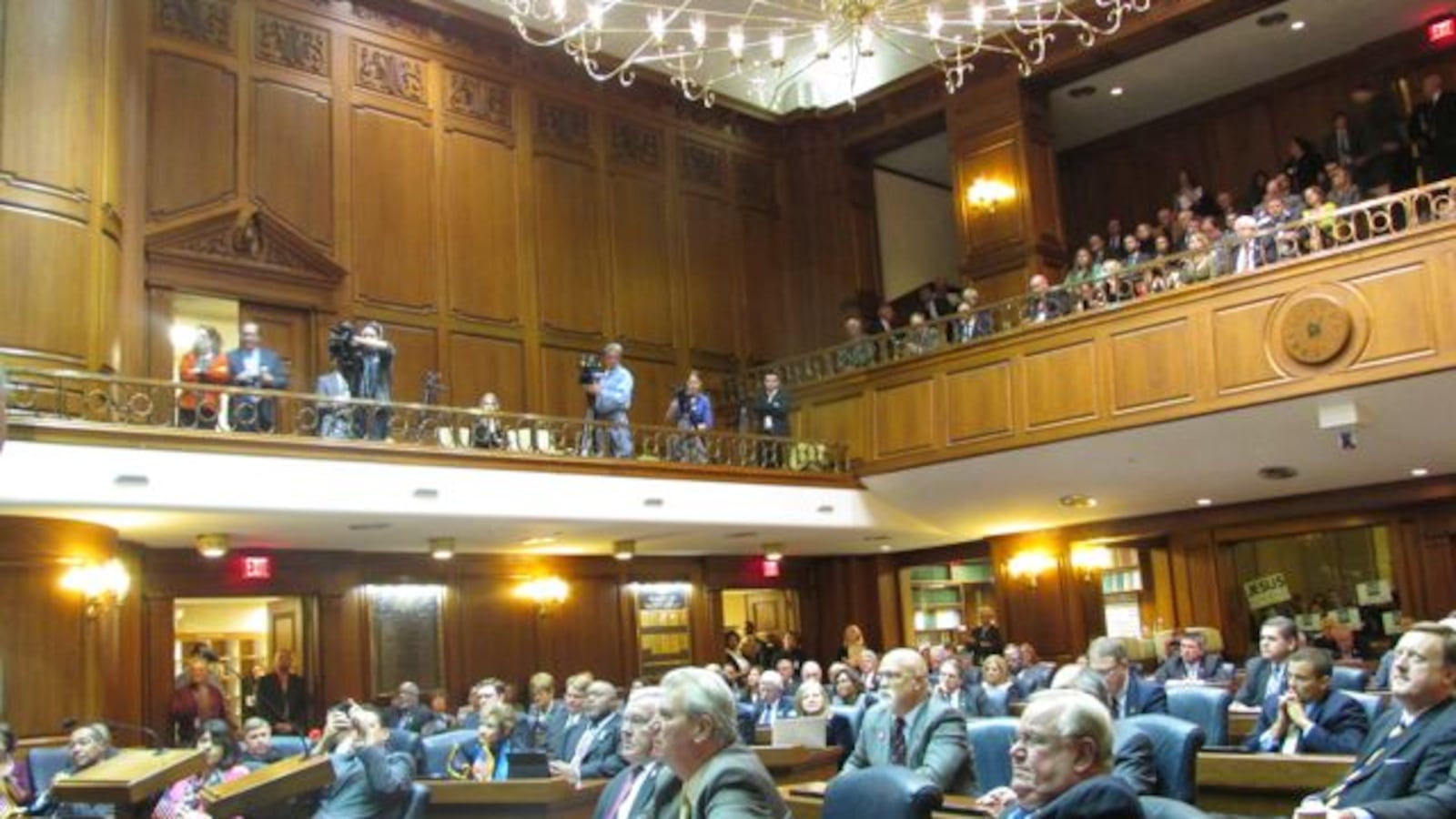The effect of the new school funding formula approved by the Indiana legislature tonight can be summed up by the effect on the richest and poorest communities.
Of the 25 school districts with the highest family income, all of them will get more per-student state aid over the next two years.
But what about the 25 with the lowest family income? Just 12 of them get more money in 2016 and 2017 across the board — in overall state aid and per-student aid. The rest get less in one or both areas.
Sen. Greg Taylor, D-Indianapolis, said it’s just not a sustainable model, especially for districts like Indianapolis Public Schools.
“We have 30,000 kids in my school district who are going to be asked to perform at a high level with less money than their surrounding school districts,” Taylor said. “One day we are going to have to come back here and recognize that that’s not going to happen with the lack of investment we have put in our children.”
Poor districts, in many cases, were just glad they weren’t hit harder. They faired worse in earlier draft budgets. But across the state, even poor districts that got more money saw smaller gains compared to their wealthier counterparts.
For example, Indianapolis Public Schools would’ve seen a 6 percent loss in funding in the House’s plan, a 4.2 percent loss in the Senate plan, but just a 2.8 percent loss in the new draft — a cut of about $17 million over two years. The final version of the budget, which next heads to Gov. Mike Pence, was the only scenario that included a funding bump for IPS — a 0.4 percent gain in per-student aid over two years to $7,708 per-student from $7,678.
But the budget enrollment projections struck IPS officials as pessimistic, suggesting the district would lose about 1,000 students during the next two years. IPS enrollment has been mostly stable for the past three years, and there is reason to believe it will remain so or even grow.
The district also recently decided to partner with Charter Schools USA to add grade levels at Emma Donnan Middle School, with a goal of recruiting up to 300 new students to the school that IPS could count. CSUSA operates the middle school independently after the school was taken over by the state for low test scores in 2012.
If IPS is right and enrollment remains steady, district officials estimate it could save $10 million over two years, reducing the lost state aid to just $6.5 million.
Other Indianapolis schools fair better.
All Marion County school districts besides IPS get more money from the state under the budget plan, with Franklin Township and Perry Township leading with 6.7 percent increases in overall funding. Both districts’ boosts can be attributed in part to growing student populations.
Wealthy Central Indiana school districts did especially well. Hamilton Southeastern schools, for example, would jump 12.4 percent in state aid over two years, while Westfield-Washington would jump 11.5 percent. Carmel and Zionsville will see gains of 9.1 percent and 9.6 percent.
A comparison of two of the state’s poorest districts, East Chicago and Gary schools, shows their overall state aid being reduced by 2 percent and 6.7 percent, respectively. Sen. Karen Tallian, D-Portage, said the state shouldn’t underestimate urban schools — that only makes things worse in the future.
“We make this self-fulfilling paradigm that we assume that Indianapolis, Gary, — big city schools — are going to lose students, so we fund them with less money,” Tallian said. “That makes them less able to fund good education, and then more kids really do leave.”
Yet Republican supporters of the budget plan say all schools should be on more equal footing when it comes to state aid. They have argued the poorest districts should get more money than the richest, but that today they get too much extra.
House Ways and Means Committee Chairman Rep. Tim Brown, R-Crawfordsville, hailed the budget plan for giving a big boost to schools while meeting other priorities. He cited Pence’s call in January for 2015 to be an “education session” for the legislature.
“Mission accomplished,” he said. “Every child has an opportunity across the state of Indiana.”
Rep. Greg Porter, D-Indianapolis, likened Brown’s comments to President George W. Bush’s much-mocked premature proclamation of “mission accomplished” in the Iraq War.
“I can remember someone said ‘mission accomplished’ a few years ago on an aircraft carrier, and the mission was not accomplished,” Porter said. “From a Democratic perspective the mission is not accomplished.”
Porter said the new school funding formula would be “devastating” to many Indiana schools, especially those that serve the state’s most vulnerable children.
“There will be job losses in regards to this proposed budget,” he said. “We take a big blow. Hundreds of public school teachers will be terminated, and class sizes will be raised, mostly in our poorest schools.”
More dollars for English language learners were put into the funding formula, and special aid for children living in poverty will be calculated by a new method based on the number of students eligible for food stamps, welfare and foster care. The new draft also funds full-day Kindergarten students, who in the past received less aid, the same as all other students.
Although Taylor voted against the budget, which passed the Senate 40-9 and the House 69-30, he acknowledged that the outcome might’ve easily been different.
“They could’ve lost a lot more,” he said.

